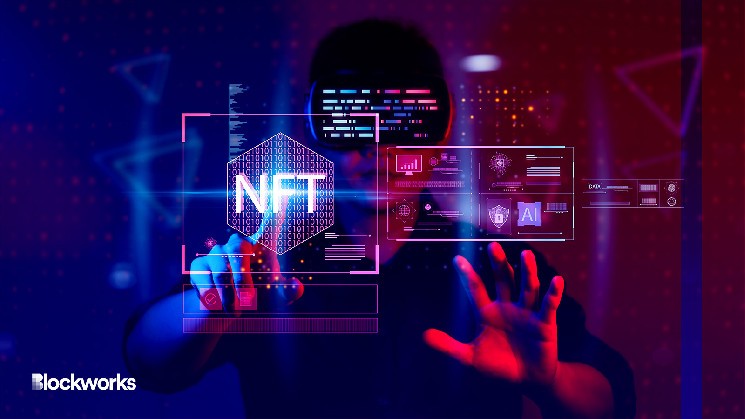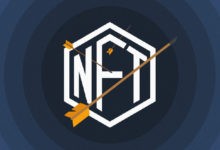What to Expect for NFTs and Digital Goods in 2023

This is Part Two of a three-part series of predictions for 2023 created by members of the Brevan Howard Digital team. In Part One they explored the gaming industry, while Part Three (tomorrow) is devoted to infrastructure, regulation, and trading.
The general rule with brands is that they’re cool until they aren’t. We see this time and time again; the next generation comes up, there’s a cultural shift, and the brand no longer represents the interests of that generation.
So how have brands like Tiffany & Co (founded in 1837), Louis Vuitton (founded in 1854), and Gucci (founded in 1921) stayed “cool” for such a long time and survived 100+ years of cultural shifts?
We think it’s because brands like these know that if they want to get to the next 100 years, the biggest risk they face is taking no risk.
Iconic brands aren’t afraid to experiment, innovate, and meet the next generation wherever they are. We spoke about games in yesterday’s predictions and brands understand that games are the third “place” (after home and school) for many Gen Z and Gen Alpha kids… and that these kids are their most important customers in the coming decades.
House of Gucci knows its biggest competitor isn’t Prada – it’s House of Fortnite, where the younger generation spent ~$20bn from 2018 through 2021 on cosmetic skins and emotes that they don’t own and which have no utility.
In many respects, brand collabs with web2 games were the training wheels that are now coming off as brands enter web3. Currently, Gucci is selling $5 digital purses to Gen Alpha in Roblox: But in the future, as those kids age and their purchasing power increases, Gucci will be selling them $5k web3 based “digital twins.”
The depth of what top-tier brands are doing in web3 is remarkable; leading brands have generated more than $260m in NFT sales and $2.8b in secondary sales volumes.
Of course, these NFT revenues pale in comparison with top brands’ “traditional revenues” (in 2021, Gucci: $11.07 billion, Nike: $44.5 billion, and Adidas: $22.6 billion). However, these brands understand at a fundamental level that sometimes the path to sustainable products and revenues means building culture, community, and stories first.
We firmly believe that meaningful revenues will follow because web3 offers “net new” forms of commerce / monetization thanks to crypto rails. This may take many different forms, including sales of NFT digital goods; direct to avatar commerce; NFTs linked to loyalty programs and experiences; and “digital twins” / “phygitals”, all of which may also generate royalties from secondary sales.
Importantly, web3 offers brands the ability to embed more value in digital and physical products and create direct consumer connections. We believe we’ll look back at these predictions in a few years and find it strange that there was ever a time when luxury / lifestyle goods weren’t paired with NFTs.
Brands bring millions of new users to web3 and generate >$500mm from NFTs
Following in the footsteps of early successful innovators such as Reddit and Nike (>$185mm in digital collectible revenue and launch of web3 platform, Dot Swoosh), many large brands will offer digital collectibles/items (aka NFTs) to their customers, onboarding millions of non-crypto native consumers into web3.
Consumers are already spending billions of dollars a year on digital goods, including ~$2bn / year in digital goods from Roblox and ~$5bn / year from Fortnite (and these purchases are for goods that are only owned on the Roblox or Fortnite platform and servers).
Web3 provides the platform for consumers to truly own their digital goods and for a wide swath of brands to enter the digital goods space. Just as 2010 was the year of every company building a “social media strategy,” 2023 will be the year that every brand — starting with luxury and streetwear — develops a “web3 digital goods strategy”.
Such a strategy is a must for any brand that seeks to meet the next generation of customers where they are, such as kids aged 12-17, who are already spending an average of $92 / month on digital goods.
Polygon’s NFT Volumes Catch Up to its Business Development
Polygon has been a crypto bright spot in 2022, announcing partnerships with massive brands like Starbucks, Nike, Disney, Reddit, the NFL, and Meta. More than 5mm Reddit Collectible Avatars across 4.25mm unique wallets have been minted on Polygon generating about $11.85mm in secondary sales.
That said, over the last 30 days, Polygon’s NFT volumes, ~$7.3mm, are less than 1/10th of Solana’s, ~$80.8mm (as of December 13, 2022). We expect volumes on both chains to grow, but the growth on Polygon to be more dramatic, increasing to over $50mm / month in 2023.
Many of Polygon’s announced brand partnerships have yet to launch and we expect to see Polygon’s NFT volumes increase as / when those web3 experiences come to life.
Polygon’s partnership with Meta alone has the potential to introduce Instagram’s 2bn+ MAUs to Polygon when its creator digital collectibles program launches in 2023.
We also expect Polygon Edge / Supernets to gain traction in 2023 and draw in more partners (as well as the potential launch of Polygon zkEVM).
Finally, we’re banking on Ryan Wyatt, CEO of Polygon Studios and former Global Head of Gaming at YouTube, to continue bringing prominent partners to Polygon in 2023, especially from an area he knows better than most — web2 gaming.
Apple battles to protect its 30% fee on digital sales…and potentially launches an internal NFT marketplace
This is a prediction that we *really* hope doesn’t come true. But what if Apple’s recent overtures on NFTs — including its most recent move to increase the cap on app store purchases from $999 to $10k and rumored opening up of the app store to third party developers in the EU due to competition regulations that come into effect in 2024 — are just the McGuffin towards the launch of an internal, closed garden NFT marketplace?
Apple could mandate that any NFT created or residing within any Apple mobile app experience would not be transferable outside of its walled garden and that secondary trading of these items must occur through its internal marketplace, where Apple would take its 30% fee.
Some might say this is good for non-crypto native adoption of NFTs because folks could easily get exposure to multitudes of NFTs through the simple click of a button in-game / in-experience. This is a view that we strongly disagree with because closed-network, high-fee environments are the antithesis of web3.
Some believe that a potential mitigant to Apple’s fee monopoly might be when the United States Court of Appeals for the Ninth Circuit renders a decision on Epic Games v. Apple. While we expect that Apple will lose its appeal, this case likely ends up in the Supreme Court, resulting in a key issue — the ability for developers to “outlink” to alternative, cheaper forms of payment for digital goods purchases (e.g., via a browser) — taking many, many years to ultimately settle.
Of course, Apple could voluntarily capitulate on allowing “outlinking” sooner due to Epic Games CEO Tim Sweeney’s relentless social media attacks and/or regulatory pressure, which would in theory be a good development for NFTs. However, it’s not a stretch to imagine that Apple will argue “outlinking” applies to all digital goods except NFTs because NFTs are more “dangerous” than regular, run-of-the-mill digital goods.
Expect Apple to assert that NFT consumers are in even greater need of Apple protecting them from a “breach in the wall” by bad actors who may inject malware and commit fraud. There’s no doubt in our minds that Apple’s 30% fee ultimately goes away one way or another, but, unfortunately, there is equally no doubt in our minds that Apple will go down swinging as hard as it can and taking as much revenue as possible along the way.
We predict that in 2023, Apple’s battle to protect its 30% fee will only intensify, which may result in the launch of a walled garden marketplace for NFTs. #Nineteen Eighty-NFT
OpenSea’s market share falls below 25%
OpenSea’s market share has been hovering in the 40-50% range through the last six months after maintaining 75%+ for most of the bull run (Q2 2021 to Q2 2022). As additional exchanges have emerged, many have started to take market share with differentiated user experiences for specific use cases (e.g., Blur for professional trading experience, Sudoswap for AMM-style floor trading, Niftyswap for ERC-1155s, Rarible for white-label marketplaces, etc.).
Another cohort of competitors that will take market share is vertical-specific exchanges that meet the needs of a certain category, such as music, digital fashion/entangled products, fan collectibles, gaming assets, brand engagement, generative art, and more.
Royalty enforcement will also play a critical role in determining where volume accrues, and OpenSea will continue to face difficult tradeoffs between attracting trading volume and protecting artists/creators.
Additional research and reporting by Drew Van der Werff, Alex Matthews, and Ross Trachtman
The commentary contained in this document represents the personal views of its authors and does not constitute the formal view of Brevan Howard. It does not constitute investment research and should not be viewed as independent from the trading interests of the Brevan Howard funds. The views expressed in the document are not intended to be and should not be viewed as investment advice. This document does not constitute an invitation, recommendation, solicitation or offer to subscribe for or purchase any securities, investments, products or services, or any investment fund managed by Brevan Howard or any of their affiliates. Unless expressly stated otherwise, the opinions are expressed as at the date published and are subject to change. The authors and Brevan Howard may have taken positions in the assets and companies discussed in the commentary. No obligation is undertaken to update any information, data or material contained herein.






 Bitcoin
Bitcoin  Ethereum
Ethereum  Tether
Tether  USDC
USDC  TRON
TRON  Dogecoin
Dogecoin  Cardano
Cardano  Bitcoin Cash
Bitcoin Cash  Chainlink
Chainlink  Zcash
Zcash  Monero
Monero  LEO Token
LEO Token  Stellar
Stellar  Litecoin
Litecoin  Hedera
Hedera  Dai
Dai  Cronos
Cronos  Tether Gold
Tether Gold  OKB
OKB  Ethereum Classic
Ethereum Classic  KuCoin
KuCoin  Gate
Gate  Algorand
Algorand  Cosmos Hub
Cosmos Hub  VeChain
VeChain  Dash
Dash  Tezos
Tezos  TrueUSD
TrueUSD  Stacks
Stacks  IOTA
IOTA  Decred
Decred  Basic Attention
Basic Attention  Theta Network
Theta Network  NEO
NEO  Synthetix
Synthetix  Qtum
Qtum  Ravencoin
Ravencoin  DigiByte
DigiByte  0x Protocol
0x Protocol  Zilliqa
Zilliqa  Nano
Nano  Siacoin
Siacoin  Numeraire
Numeraire  Waves
Waves  Status
Status  BUSD
BUSD  Ontology
Ontology  Enjin Coin
Enjin Coin  Pax Dollar
Pax Dollar  Hive
Hive  Lisk
Lisk  Steem
Steem  Huobi
Huobi  OMG Network
OMG Network  NEM
NEM  Bitcoin Gold
Bitcoin Gold  Augur
Augur  Ren
Ren  HUSD
HUSD